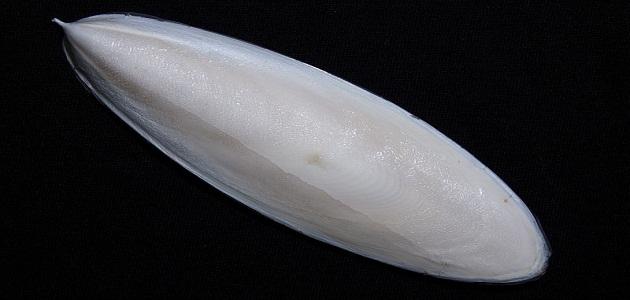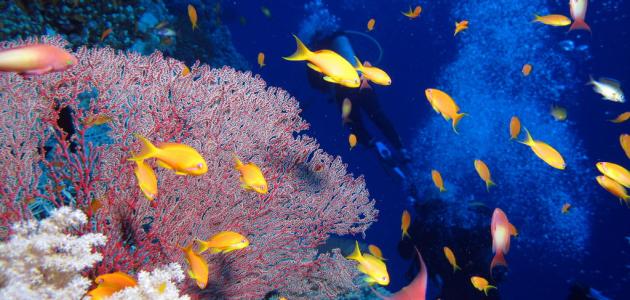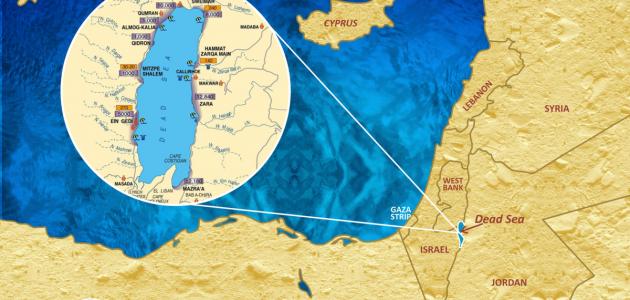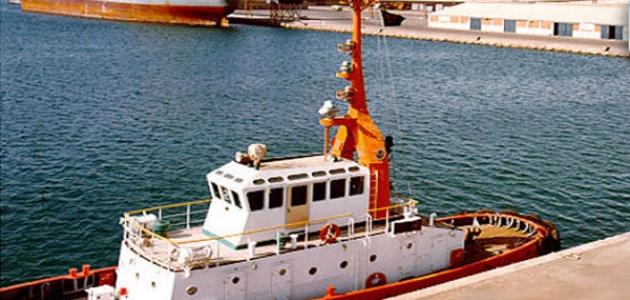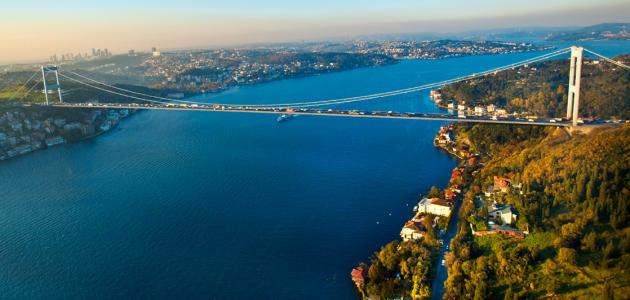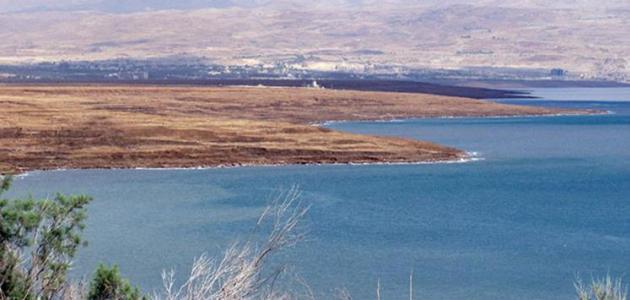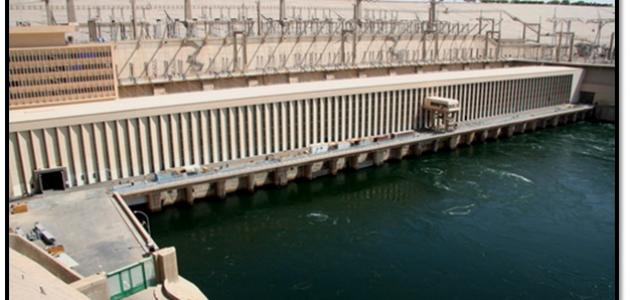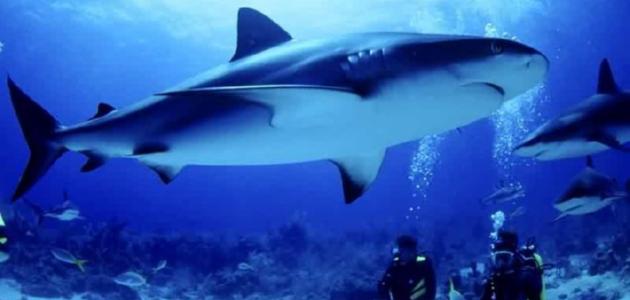sea water
The seas and oceans make up most of the hydrosphere on the surface of the earth, as it occupies approximately 98% of the percentage of water in nature, and sea water has its chemical and physical characteristics that distinguish it, and it also has biological conditions commensurate with its biodiversity, and one of the most important characteristics that distinguish sea water is that it Salty water, as the average salinity of water in the seas and oceans of the world is about 3.5%, meaning that every one kilogram of water contains 35 grams of dissolved salts in the form of ions, most of which are positive sodium ions (+Na), and negative chloride ions (-Cl).
Salts affect the properties of sea water, increasing the mass of water, which increases its density. Therefore, sea water is considered denser than fresh water or pure water, as the average density of sea water at the surface is 1.025 kg / liter compared to fresh water, which has a density of 1.0 kg / liter at a temperature of 4 degrees Celsius, and the increase in the crystallization of salts in Water lowers its freezing point, making it freeze at two degrees below zero Celsius.
The reason for the salinity of the sea
Salinity is a general term used to describe the level of various salts dissolved in water, such as: sodium chloride, magnesium sulfate, calcium sulfate, and bicarbonate. Approximately, which is equivalent to the height of a building consisting of 152 floors, and the following are the reasons and events that led to making the sea salty:
Read also:The most beautiful beach in the worldOrigin of seas and oceans in ancient times
The emergence of the seas and oceans dates back to millions of years, and this contributed to the accumulation of salts in them, as a large part of these salts were found due to volcanic activities. When volcanoes erupt, vapors and gases such as carbon dioxide are released, which dissolves in rainwater and turns it into acidic water. Rainfall on rocks liberates dissolved ions from them, which reach the seas and oceans through the mouths of rivers, and rivers and surface streams of rainwater carry more ions and dissolved salts from the eroded rocks that they pass through as they run towards the seas, and chloride and sodium ions make up 90% of these salts present in sea water.
evaporation
The continuous evaporation of water contributed to an increase in the percentage of salts in the seas and oceans. When the water evaporates, the salts remain in the seas and oceans, and the evaporated water returns to the earth in the form of rain that feeds the rivers and forms surface running water that carries with it more dissolved salts and minerals.
Hot water vents and submerged volcanoes
Hot water craters were discovered in the depths of the oceans called (in English: Hydrothermal vents), where sea water seeps through cracks in the rocks of the oceanic crust to hot areas, so the water heats up and dissolves some of the minerals in the interior of the earth, to exit again into the ocean water through the craters loaded With dissolved salts and minerals, as this hot water rubs with minerals in the rocks of the oceanic crust and interacts with them, in addition to the submerged volcanoes that occur at the bottom of the seas and oceans, which provide water with dissolved salts through the interaction of ocean waters with mineral-rich lava that emerges from existing cracks. from the ocean floor directly into the water.
Read also:The reason for naming the Red Sea by this nameweather changes
Climate changes resulting from human activities have caused a slight gradual increase in salinity levels in some areas. Global warming has led to changes in precipitation patterns. Studies indicate that the rise in temperatures resulting from global warming increases evaporation in subtropical and tropical regions. North Atlantic, which leads to an increase in the concentration of salts in it, and then the moist air particles move by wind to other regions such as the poles and the Pacific Ocean, where rain falls, which leads to a decrease in the concentration of salts there.
The importance of the salinity of the seas
The importance of the salinity of the seas for the environment
The salinity of sea water is important to the environment for several reasons, as follows:
* Climate regulation: The salinity and temperature of sea water are factors that directly affect the density of water. Salt water is denser than fresh water, and the density characteristic has an important role in the occurrence of sea currents between the oceans of the tropics and the poles, as these currents control the transfer of heat and thus regulate the world's climate.
- The relationship of salinity to the water cycle: The surface salinity of sea water is linked to the overall water cycle on Earth, and controls the amount of fresh water that enters the oceans through precipitation and the water that leaves them through evaporation.
- pH stability of water: The salt content of sea water provides a high ability to resist the change in pH when adding an acidic or alkaline compound. If we add 1 micromol of hydrochloric acid to 1 kg of distilled water, its pH decreases from 7.0 to 6.0. As for sea water Its pH decreases from 7.0 to 6.997, with a difference of only 0.003 units, because the buffering capacity of sea water is 330 times more than that of fresh water.
The importance of the salinity of the seas for marine organisms
Salinity levels vary in the world’s seas and oceans, and may differ from one region to another in the same sea, such as the estuaries of rivers where salinity levels decrease as a result of the confluence of river water with sea water, as this difference plays an important role in the biodiversity and distribution of marine organisms, for marine organisms The ability to adapt to maintain stable levels of salts in their bodies to prevent disruptions in their vital functions.
Read also:What is the largest ocean?Some marine organisms are described as stenohaline, meaning that they cannot adapt to large fluctuations in salinity levels; Therefore, it lives in the seas, and some marine organisms are described as salt-tolerant (Euryhaline); They are marine organisms that have the ability to adapt to fluctuations in salinity levels; Therefore, they are often found at the mouths of rivers. As for significant changes in salinity levels, which may deviate from the appropriate limits for the life of marine organisms, they can change the behavior of these organisms or limit their reproduction.
The importance of the salinity of the seas for humans
Sea water is an abundant source of sodium chloride salt, which is extracted by humans in several ways to obtain table salt, which plays an important role in maintaining human health, as it is considered the main source of sodium and chloride ions in the human diet. Regulate fluids in the body, and control blood pressure, while chloride ions contribute to regulating blood pH and pressure, and are an essential component of stomach acid.
It is worth noting that a person loses sodium and chloride ions through the secretion of sweat, and compensates them through the diet. He consumes foods that naturally contain salt, such as: meat and seafood, and he also uses salt to add flavor to foods.
The saltiest bodies of water
The following table shows the ten most saline water bodies on the Earth's surface, which are as follows:
| body of water | Salinity | Location |
|---|---|---|
| Don Juan Lake | 44% | Antarctica |
| Lake Retba | 40% | السنغال |
| Lake Vanda | 35% | Antarctica |
| Karabogaz Kul Bay | 35% | Turkmenistan |
| honey lake | 34.8% | جيبوتي |
| Dead Sea | 33.7% | Jordan and Palestine |
| Lake (Little Manitou) | 18% | كندا |
| Urmia Lake | 8.5-28% | Iran |
| Laguna Cigar Lake | 5-28% | Chile |
| Great Salt Lake | 5-27% | الولايات المتحدة الأمريكية |
You can find out more information related to the salinity of some water bodies, as follows:
- Don Juan Lake: It ranks first as the most salty water body, with a salinity of 44%, and with this percentage it is twelve times more salty than ocean water, and because the freezing point of water decreases with an increase in salinity, the water of this lake remains in the liquid state until a temperature of -50 degrees Celsius. However, the melted ice in it contributes to reducing its salinity.
- Lake Vanda: Lake Vanda is ten times more salty than sea water, and this lake is characterized by a geological phenomenon called (in English: meromictic), where surface water does not mix with deep water, and it is a fish-free lake, but there are some microorganisms such as algae.
- Dead Sea: The Dead Sea is known as the lowest spot on Earth, as it is about 430.5 meters below sea level, and it was named by this name because there are no marine organisms living in it because of its high salinity, but there are some types of bacteria present in it, and because of the high concentration of salts in sea water dead bodies float on its surface.
- Great Salt Lake: The reason for the high salinity in the Great Salt Lake is that the water that flows into it does not come out of it to any other outlet, and because of this high level of salts, it is an environment that is not suitable for the life of many aquatic organisms such as fish, but it is a suitable environment for the life of some organisms that can adapt With this salinity such as some species of algae, certain types of prawns and flies.
- Mono Lake: Mono Lake is located in the Great Basin (in English: The Great Basin) in the state of California in the United States of America, and it is surrounded by mountains on all sides, which makes it a closed water basin into which fresh water streams and springs flow with small amounts of salts that have accumulated over time, but Water does not come out of it except by evaporation, as approximately four feet of its water evaporates annually, so the lake water is two to three times more salty than ocean water, depending on the fluctuation of the water level over the years.
The reason for the increase in salinity in the seas than in the rivers
Rivers overflow and flood the rocks and dissolve the salts, so this water flows carrying salts to the seas, and this process has taken place for millions of years, as these salts accumulate in the seas and oceans. Very much compared to the amount of salts accumulated in sea water.
Salinity determinants
The salinity of seas and oceans depends on several factors, and these factors may vary according to the place and time of salinity measurement. The salinity determinants include five main factors, which are as follows:
- Evaporation Salinity increases in places where evaporation rates are higher. Evaporation rates in tropical seas and close to the Tropic of Cancer, such as the Red Sea and the Arabian Gulf, are the highest, so salinity levels rise there.
- temperature: There is a direct relationship between the temperature and the salinity of the seas, as the salinity rises in the areas where the temperatures are high.
- Rainfall: There is an inverse relationship between precipitation and salinity, as salinity increases in areas where rain falls at low rates, and for this reason we find that salinity levels are lower in tropical regions compared to subtropical regions, although temperatures are high in both, but tropical regions witness Heavy rain.
- ocean currents: Marine currents affect the spatial distribution of dissolved salts in the waters of seas and oceans. Warm currents near the tropics push salts away from the eastern fringes of the oceans and collect them near the western fringes. Also, sea currents in temperate regions cause an increase in salinity near the eastern fringes as a result of the push of salts. Towards it, for example, the Gulf Stream in the North Atlantic Ocean increases the salinity of ocean water along its western shores, and the North Atlantic Drift increases the salinity of water in the North Sea.
- fresh water flow: Fresh water flows into the seas and oceans through the rivers that flow into it, so the salinity is relatively lower in the areas where rivers meet with the oceans. Glaciers melt during the summer, fresh water flows into the ocean and reduces surface salinity.
It should be noted that despite the continued accumulation of salts in the waters of the seas and oceans over the years, the degree of salinity of the water remains relatively stable. This is due to the consumption of these salts through natural processes that occur permanently, so part of the salts is consumed by organisms that live in sea waters, and another part of the dissolved ions is deposited and forms new minerals.
Horizontal and vertical distribution of seas and oceans salinity
Horizontal distribution of salinity
The surface salinity decreases by moving away from the tropics, as the surface salinity of the waters of the areas located along the Tropic of Cancer, for example, is about 3.6%, while it is 3.5% at the equator. On this basis, the seas and oceans of the world can be classified into three categories, which are as follows:
- Seas with salinity levels below normal: The reason for the low salinity in it from the normal rate is due to the influx of fresh water to it, where the salinity of surface water can reach 2.1%, and examples of it are; The Arctic Ocean, the Southern Ocean, the Bering sea, the Sea of Japan, and the Baltic sea.
- Seas with salinity levels within the normal range: They have surface salinities ranging between 3.5% - 3.6%, and examples of them are; Caribbean Sea, Gulf of Mexico, Gulf of California, Yellow Sea.
- Seas with salinity levels above normal: The reason for the high salinity in it from the normal rate is due to the high temperatures and thus the increase in evaporation rates. Examples include; The Red Sea has a salinity of 3.9% - 4.1%, the Arabian Gulf has a salinity of 3.8%, and the Mediterranean Sea has a salinity of 3.7% - 3.9%.
Vertical distribution of salinity
The salinity of the seas and oceans varies with the difference in depth, and this difference leads to the division of ocean waters into layers of different salinities. As for the salinity in deep waters, it is almost constant; Because there is no decrease or increase in the amount of water, nor an addition of salts, as happens in surface water, and since the density of water increases with the increase in salinity, the more salty water descends under the less salty water, so the salinity in general increases gradually with the increase in depth, until reaching an area called Tamarij. Salinity (in English: Halocline), where the salinity increases sharply.

